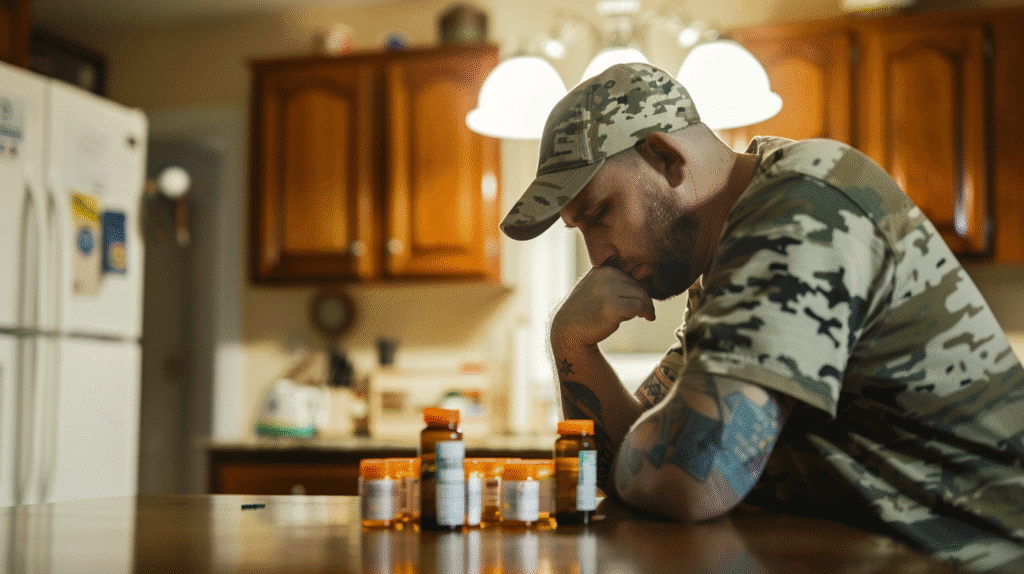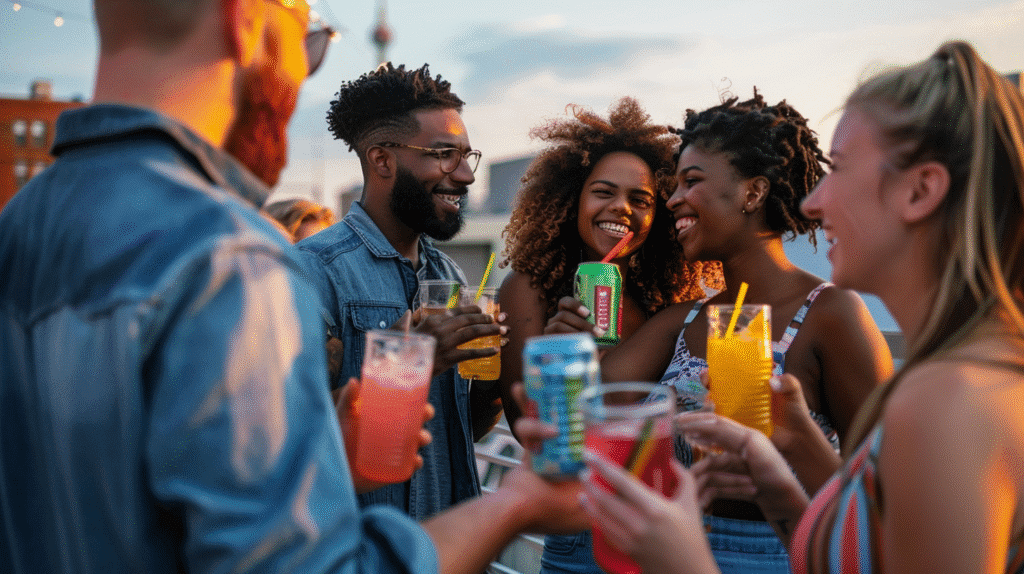Nearly 190,000 Americans Arrested for Cannabis in 2024—Despite Legalization

Marcus Johnson was 23 years old when police stopped him and found cannabis, rolled as a joint, in his car, and were arresting him for it. He was not driving the vehicle under the influence. He was not selling. He possessed one of these joints—the same cannabis product licensed stores just a few states north are selling. He now has a felony conviction, which follows him to each job interview.
Marcus was among the 187,792 individuals busted for good old weed possession in 2024, FBI data reported, issued on October 15, 2025. That’s more than 22% of the entire country’s drug arrests—as many as half a million arrests each 24-hour period—for possession of a plant legal for adults in 24 states and the District of Columbia.
The statistics, put together by the FBI’s Crime Data Explorer, present an alarming truth: despite the growing popularity of legalization and popular support for reform, cannabis arrests are still the leading drive behind America’s war on drugs.
At least 204,036 people were arrested by the police for cannabis offense last year, 92% of these arrests were for plain possession of, not sales or cultivation of cannabis.
“While the collective number of cannabis arrests have gone down nationwide in recent years, cannabis prosecutions are still by far the leading cause of war on drugs enforcement across the United States,” said Paul Armentano, Deputy Director of NORML. “Tens of thousands of Americans are still annually arrested for cannabis-related low-level crimes even though the overwhelming majority of voters are no longer of the mindset the adult responsible use of marijuana should be criminalized.“
The personal cost is overwhelming. An arrest for cannabis is not just a temporary setback—it is a life-altering experience that leaves behind an indelible criminal record. That record haunts individuals for years, restricting access to jobs, housing, loans, and professional licenses. For far too many, and most disproportionately youth and communities of color, an arrest for cannabis becomes a barrier to possibilities that determine the trajectory of the life of the person.
The arrest figures are down from cannabis’s peak of enforcement. In 2007, police carried out 870,000 or so cannabis-related arrests—the better part of half of all of America’s drug arrests. Still, despite legalized cannabis momentum gaining speed, the rate of descent has been painfully gradual. Since the year 2000, police have conducted 16 million or so cannabis-related arrests throughout the United States.
The gap is most dramatic looking at geography and demographics. In states where cannabis remains illegal, enforcement disproportionately falls on low-income communities and communities of color. Black Americans are almost four times as likely to be arrested for cannabis as white Americans, even though their rates of use are close.
Enforcement mostly burdens youths, as cannabis arrests interrupt education and early workforce opportunities.
Meanwhile, the cannabis industry has become legal, regulated, and taxed and brings in billions of state revenue. Adults are able to go into licensed shops in half the nation and buy cannabis products just by providing an ID. However, the same action, in the next state, results in handcuffs, photos, and criminal charges.
“It is a completely debilitating policy that wrecks lives and has long-lasting consequences,” Armentano continued. “Low-level marijuana offenders, often poor, minority, young people should not have to suffer the arrest, the criminal conviction, and the lifelong sanctions and stigma of it for participating in activity legal for adults in almost half the states of this nation.”
For Marcus Johnson, the effects of arrest go far beyond the fine. He lost his job the day his employer ran a background check. He was kept out of trade school. He’s been denied apartments because landlords refuse to rent to someone convicted of drugs.
All because of the possession of a plant, which, had he been stopped just a few states away, would have been legal.
The FBI statistics highlight an embarrassing reality: the United States of America maintains two legal systems. In one, cannabia is a legal, regulated substance offering jobs and tax revenues. In another, it is the cause of arrest, persecution, and lifelong stain on someone’s record. For as long as this chasm exists, hundreds of thousands of Americans will continue to pay the price.
Source: NORML
Pennsylvania Bill Would Let Terminally Ill Patients Choose Cannabis Over Opioids

Ryan Bartell spent his final weeks in a California hospital bed, drowsy and disconnected from his family because heavy opioids were the only legal pain relief available to him. His father Jim watched helplessly, knowing cannabis could have given Ryan clearer, more comfortable final days. “He deserved better,” Jim says.
In October 2025, Pennsylvania State Senator John Kane introduced legislation named in Ryan’s honor that could change that reality for terminally ill patients across the Commonwealth. The Compassionate Access to Medical Cannabis Act—known as “Ryan’s Law”—would require Pennsylvania hospitals to allow dying patients to use medical cannabis during inpatient care.
The bipartisan bill, cosponsored by 17 senators, addresses a cruel gap in Pennsylvania’s medical cannabis program: while cannabis has been legal for medical use since 2016, hospitals currently prohibit its use on their premises. This forces terminally ill patients onto heavy opioid medications that leave them sedated and unable to meaningfully communicate with loved ones during their final days!
“Hospitals are incredible places where patients receive top notch care,” Kane wrote in his cosponsorship memo. “They need guidance and legal protections to provide terminally ill patients with options to manage pain, while providing settings that support family and friends who are saying goodbye to a loved one.“
Ryan Bartell’s story catalyzed the legislation. In 2018, the 41-year-old special education teacher was diagnosed with stage 4 pancreatic cancer and given just weeks to live. His California hospital initially prohibited cannabis use, forcing Ryan onto fentanyl and other opioids that kept him unconscious most of the time. After four and a half weeks, his family found a facility willing to allow medical cannabis.
“Instead of being asleep from the fentanyl, the medical cannabis provided him with a quality of life for his final two and a half weeks that allowed him to have much-needed conversations with his family and time to reminisce and laugh with his many friends who came to visit,” Jim Bartell recounted. Ryan died on April 21, 2018—but his father’s advocacy inspired California to pass the first Ryan’s Law in 2021.
Now Pennsylvania is poised to become one of over 30 states considering similar legislation. The bill would apply to patients with terminal illnesses—defined as having a life expectancy of one year or less. Hospitals would be required to permit cannabis use but could prohibit smoking and vaping, allowing only non-inhaled forms like oils, tinctures, edibles, or capsules.
Hospitals fear federal repercussions since cannabis remains a Schedule I controlled substance. But the bill includes protections: facilities cannot refuse cannabis access “solely due to the fact that cannabis is a Schedule I drug under the Controlled Substances Act.” Pennsylvania’s legislation is modeled after successful implementations in California and Maryland, where hospitals have integrated medical cannabis into end-of-life care without federal intervention.
A study published in the Clinical Journal of Oncology Nursing found hospitals implementing Ryan’s Law saw positive outcomes for patients, caregivers, and staff. “The use of cannabis products has been shown to improve symptom management for patients with cancer,” the study concluded. “Healthcare facilities in California, as well as other states with similar laws, can safely integrate patient self-administration of medical cannabis into the clinical setting.”
Kane, a cancer survivor himself, said his personal health scare motivated him to champion the bill. “I began to think about my family and how I needed to spend more time with them,” he said. “I’m one of the lucky ones, but others don’t always get that opportunity.”
The bill was referred to the Senate Law and Justice Committee in October. If passed, Pennsylvania would join the growing movement recognizing that dying patients deserve dignity and autonomy in choosing their pain management—even if that choice is a plant that federal law still classifies alongside heroin.
For Jim Bartell, Pennsylvania’s legislation represents progress born from tragedy. “Every terminally ill patient should be able to have the same opportunity as Ryan,” he said, “to spend their final days with as much quality and dignity as possible. They are dying… why wouldn’t we want that for them?“
Source: Marijuana Moment
Florida Strips Medical Cannabis Cards from Patients with Old Drug Convictions

Marcus Thompson, a 58-year-old Navy veteran in Tampa, used medical cannabis for six years to manage chronic back pain from his military service. Then, without warning, the state of Florida revoked his medical cannabis card—not because he violated any program rules, but because of a 15-year-old marijuana possession conviction from before cannabis was even legal.
Thompson is one of thousands of Florida patients who lost access to their medicine under a controversial provision in a law signed by Governor Ron DeSantis in 2024 that went into full effect in October 2025. The law automatically disqualifies anyone with a felony drug conviction from Florida’s medical cannabis program, regardless of how old the conviction is or whether it was for the very substance now prescribed as medicine.
“I served my country, I paid my debt to society, and I’ve been a model citizen for over a decade,” Thompson says. “Now the state is punishing me twice for the same mistake—and taking away medicine that actually works.“
The provision appears in Florida’s broader criminal justice legislation, buried in hundreds of pages of reforms. Supporters argued that people with drug-related felonies shouldn’t have access to controlled substances. Critics call it cruel irony: using past cannabis convictions to deny people legal cannabis medicine.
Florida’s medical cannabis program, established in 2016, currently serves over 800,000 patients. The new law impacts an estimated 15,000-25,000 patients with old felony drug convictions who now face losing their medical cannabis cards upon renewal. Many of these convictions date back decades, long before Florida legalized medical cannabis.
The law makes no distinction between violent drug trafficking and simple possession. A college student caught with cannabis in 2008 faces the same lifetime ban as someone convicted of selling harder drugs. It also doesn’t account for expungements or pardons—even patients whose records have been officially cleared are being denied.
Advocacy groups have mounted legal challenges, arguing the law violates patients’ rights to medical treatment and unfairly punishes people who have rehabilitated their lives. “Florida spent years building a medical cannabis program to help suffering patients,” says Karen Goldstein of Florida’s NORML chapter. “Now they’re kicking out patients who need it most—often for the exact substance their doctors are recommending.”
The policy creates a bizarre medical system where doctors can recommend cannabis for patients, but the state can override that medical judgment based on decades-old criminal records. Veterans groups are particularly outraged, noting that many service members with PTSD or chronic pain have old drug convictions from self-medication attempts before accessing proper treatment.
For Marcus Thompson, the situation feels like a betrayal. He’s back on opioid painkillers—medications that made him feel disconnected and caused dependency issues he’d finally overcome with cannabis. “They gave me my medicine, then took it away because I got caught with the same plant 15 years ago,” he says. “Where’s the logic in that?“
Source: Florida Department of Health
New Mexico Considers Historic Insurance Coverage for Medical Cannabis

Sarah Martinez, a 34-year-old Albuquerque teacher with severe PTSD, spends $150 per month on medical cannabis that her health insurance refuses to cover. Meanwhile, her insurance pays thousands for antidepressants and anti-anxiety medications that barely helped. “The one treatment that actually works is the only one I have to pay for entirely out of my pocket,” she says.
That could soon change. House Bill 527, advancing through New Mexico’s legislature in 2025, would make New Mexico the first state in the nation to require health insurance providers—including Medicaid and private insurers—to cover medical cannabis costs for qualified patients. If passed, the legislation would fundamentally reshape medical cannabis access and potentially spark a nationwide trend.
The bill, sponsored by Rep. Cristina Parajón, cleared the Health and Human Services Committee with a 5-2 vote in early March 2025 and is now moving through the Appropriations and Finance Committee. Under the proposal, insurance providers would be required to cover a three-month supply of medical cannabis obtained from licensed New Mexico dispensaries, either through direct payment to retailers or reimbursement to patients.
New Mexico’s medical cannabis program currently has about 79,400 active patients, with nearly 40,000 listing PTSD as their primary qualifying condition among 30 recognized conditions. However, that patient count has been shrinking since adult-use sales launched in April 2022—a common pattern when medical programs lose their price advantage over recreational markets.
Medical cannabis sales dropped from 40% of New Mexico’s retail market in 2022 to just 24% in 2024. Insurance coverage would likely reverse that trend dramatically, potentially reviving New Mexico’s medical program and establishing a new standard for cannabis medicine nationwide.
The bill faces significant challenges, particularly around federal drug scheduling. Because cannabis remains Schedule I under the Controlled Substances Act—officially having “no currently accepted medical use”—there’s no federal Medicaid matching funds for cannabis coverage. New Mexico would bear the full cost of Medicaid cannabis coverage, estimated at tens of millions of dollars annually.
Additionally, cannabis lacks a national drug code (NDC), meaning it can’t be processed through standard pharmacy claims systems. Insurance companies would need to develop entirely new administrative procedures to handle cannabis reimbursements, adding complexity and cost.
A fiscal impact report estimates the average monthly cost of medical cannabis for cancer patients at $80, though 2024 sales data suggests average patients likely spend closer to $150 monthly. For the estimated 40,000 Medicaid enrollees using medical cannabis, that could mean $48-72 million in annual state expenditures with no federal matching of funds.
Despite the obstacles, advocates argue the policy makes both medical and economic sense. “If cannabis is effective medicine—and our doctors are recommending it—then insurance should cover it like any other prescription,” says Rep. Parajón. “We don’t make cancer patients pay out of pocket for chemotherapy.”
The legislation could also strengthen the argument that cannabis has “currently accepted medical use,” potentially influencing federal rescheduling efforts. If a state government requires insurance coverage for cannabis as medicine, that’s powerful evidence contradicting the Schedule I classification.
For Sarah Martinez, the stakes are personal. Her medical cannabis costs add up to nearly $2,000 per year—money she could use for other necessities. “Insurance pays for medications that made me feel like a zombie,” she says. “Why won’t they pay for the treatment that let me feel like myself again?“
Other states are watching closely. If New Mexico succeeds, expect similar legislation in medical cannabis states across the country—particularly those with large Medicaid populations looking for cost-effective alternatives to expensive pharmaceuticals.
Source: Cannabis Business Times
THC Beverages Replacing Alcohol: 56% Cut Drinking, 21% Quit Entirely

Jake Martinez used to crack open two or three beers every evening to unwind from his job as a software engineer in Portland. Then he tried a cannabis-infused drink at a friend’s barbecue. “I got the same relaxed feeling without the next-morning fog,” he says. He hasn’t bought beer since.
Martinez is part of a seismic shift in American drinking culture revealed in a groundbreaking study published in October 2025: more than half of Americans who consume THC beverages—cannabis-infused seltzers, sodas, and teas—have significantly reduced their alcohol consumption. Twenty-one percent have quit drinking entirely.
The research, published in the Journal of Psychoactive Drugs, surveyed 1,964 THC beverage consumers across 28 U.S. states where cannabis is legal for either medical or adult use. The findings suggest cannabis drinks aren’t just a novelty—they’re fundamentally reshaping how Americans relax, socialize, and think about intoxication.
Among regular THC beverage consumers, 56% reported reducing alcohol consumption, 21% stopped drinking entirely, and another 17% said they replaced alcohol with cannabis drinks in social settings. Only 27% continued drinking alcohol at the same frequency.
The reasons are striking: 84% of respondents said they preferred how THC beverages made them feel compared to alcohol. They reported fewer hangovers, better sleep, less anxiety, and greater control over their experience. Many noted that low-dose THC drinks (typically 2-10mg) provide gentle relaxation without heavy intoxication.
“Cannabis beverages offer something alcohol can’t,” says Dr. Emily Warner, lead researcher. “Predictable, measured doses that let people moderate their experience more precisely. With alcohol, it’s easy to overshoot. With 5mg THC seltzers, people can sip slowly and maintain a consistent, pleasant level.“
The public health implications could be transformative. Alcohol is linked to over 140,000 deaths annually in the United States, including liver disease, heart problems, accidents, and violence. Cannabis, by contrast, has never caused a fatal overdose. If millions of Americans genuinely reduce or eliminate alcohol consumption in favor of cannabis, mortality rates from substance use could drop dramatically.
The trend is already reshaping beverage industries. Major beer and spirits companies are investing heavily in THC drink production, recognizing that younger consumers—particularly Gen Z and millennials—are increasingly “California sober,” using cannabis but avoiding alcohol. Cannabis beverage sales in the U.S. topped $400 million in 2024 and are projected to exceed $1 billion by 2027.
The drinks come in every variety: fruit-flavored seltzers, craft sodas, cannabis-infused teas, even THC “mocktails.” Some are THC-only, others contain CBD for additional calming effects. Fast-acting formulations using nano-emulsion technology meaning effects begin within 10-15 minutes and last 2-3 hours—mimicking alcohol’s timeline but without the harsh physical toll.
Not everyone is celebrating. Alcohol industry groups downplay the threat, insisting cannabis will remain niche. Public health officials warn that replacing one intoxicant with another isn’t necessarily progress, particularly for adolescents whose brains are still developing.
But for many adults, THC beverages represent a genuine upgrade. Jake Martinez’s story is typical: “I’m more present with my family in the evenings. I sleep better. I’m not hungover on weekends. And I still get to relax with a cold drink after work.” He pauses. “Why would I go back to alcohol?“
If current trends hold—and millions of Americans follow Martinez’s path, choosing cannabis beverages over alcohol—the cultural landscape of American social drinking may look radically different a decade from now. For public health outcomes, that could be revolutionary.
Source: Marijuana Moment


